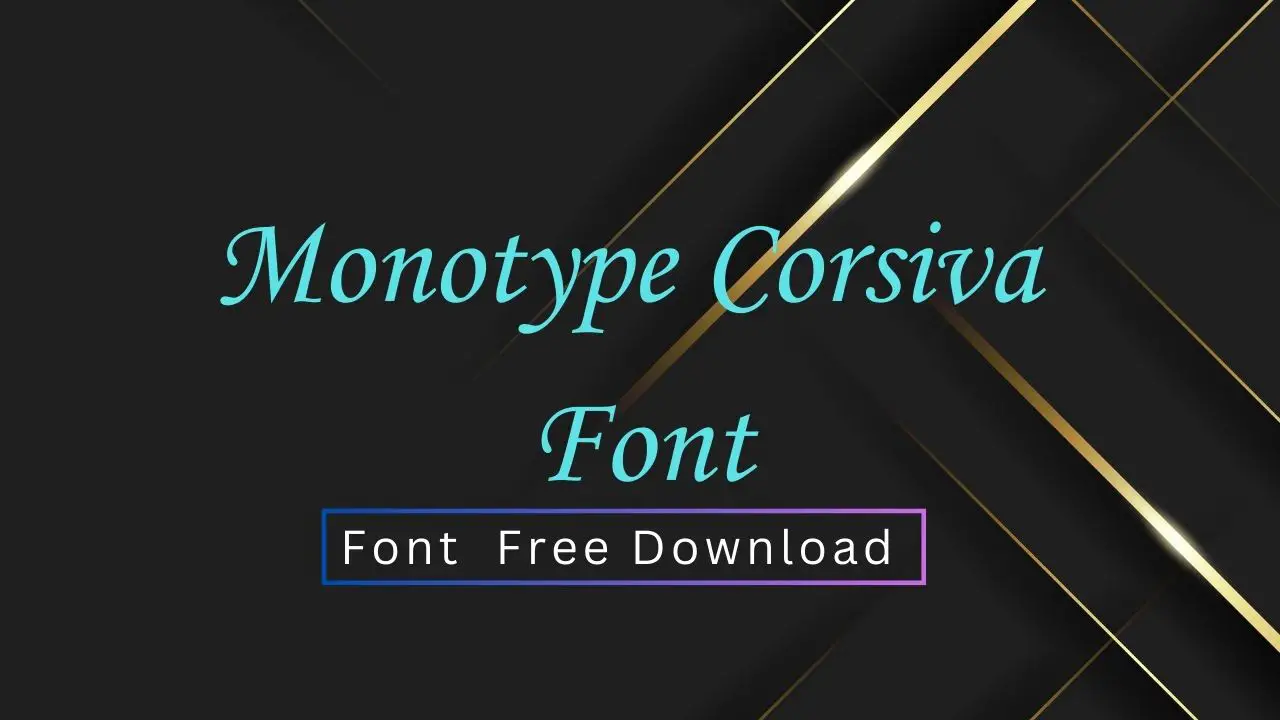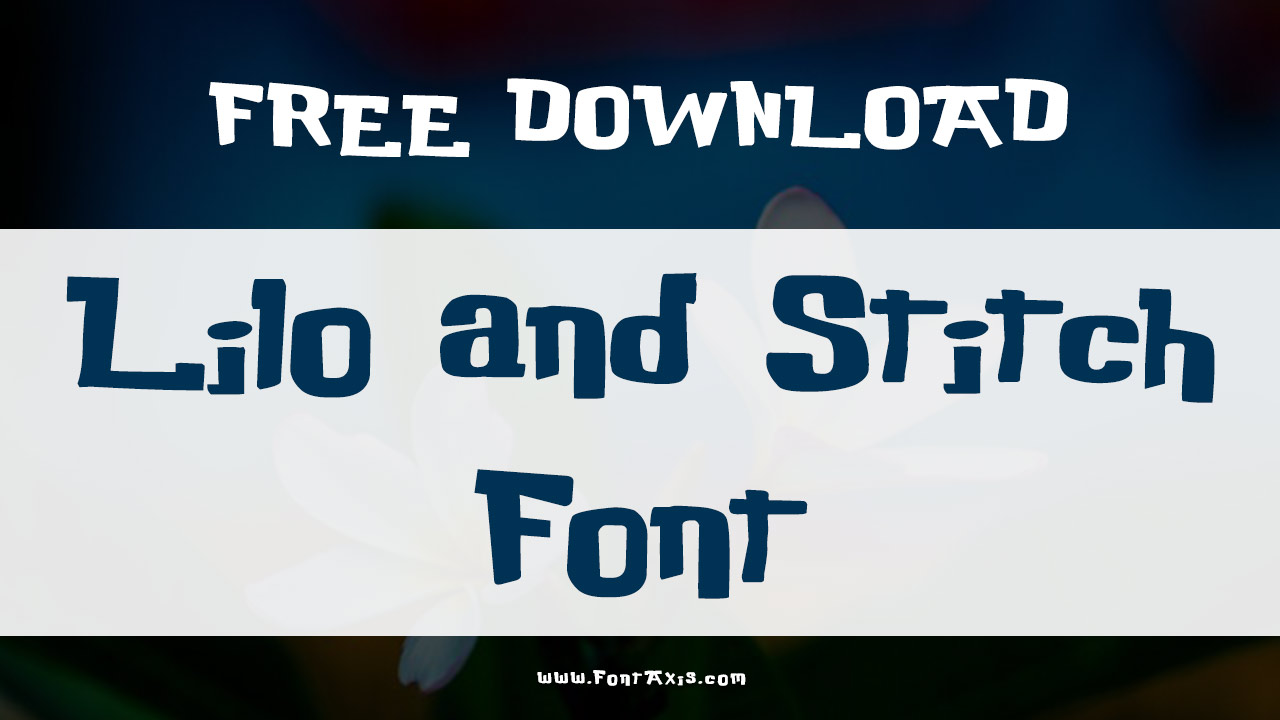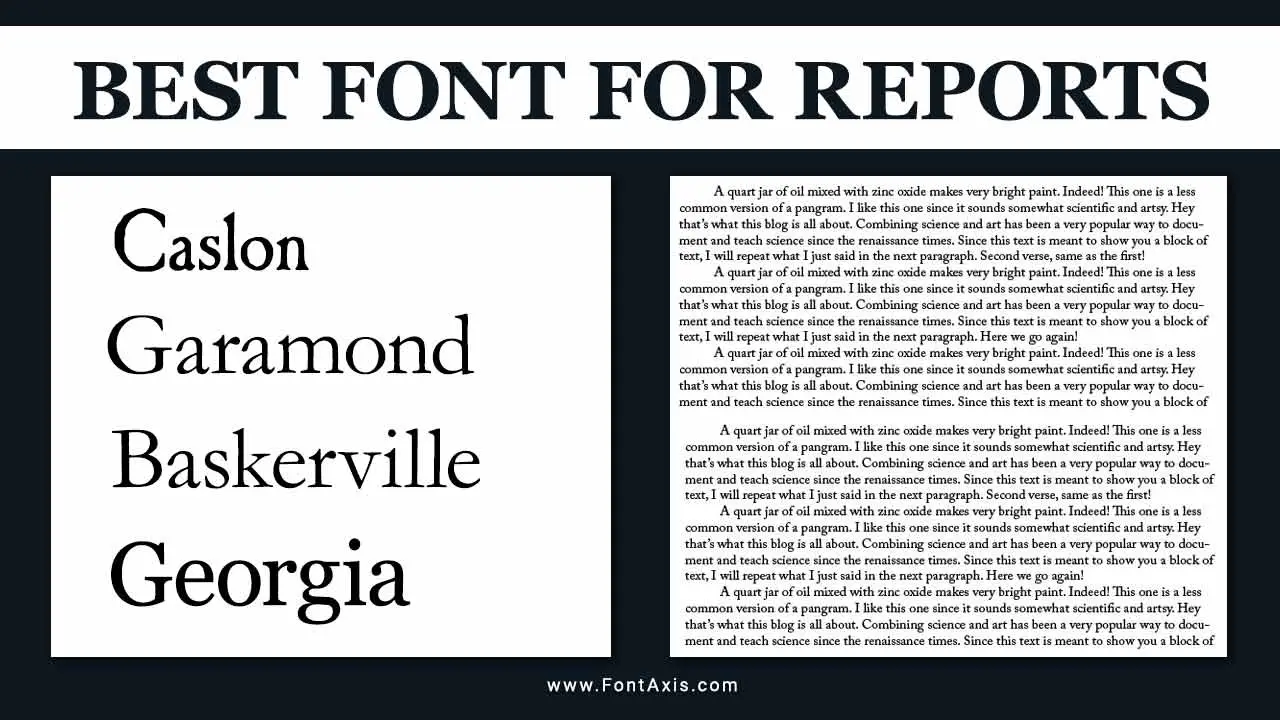Alice Font: Essential Guide
The Alice Font is a charming and versatile typeface, perfect for adding a touch of whimsy and readability to various design projects. This guide offers a beginner-friendly exploration of its characteristics, best uses, and how to effectively incorporate it into your designs for a polished, engaging look.
Finding the perfect font can sometimes feel like searching for a hidden gem. You want something that stands out, but also something that’s easy on the eyes. This is where a font like Alice comes in. It’s a friendly face in the type world, offering a delightful blend of personality and practicality. If you’ve stumbled upon Alice and wondered what makes it special, or if you’re looking for a font that brings a smile to your design, you’re in the right place. We’ll demystify the Alice Font, showing you how it can elevate your next creative project with ease.
We’ll explore what makes Alice so lovely, where it shines brightest, and how you can start using it today to make your designs pop. Let’s dive into the wonderful world of the Alice Font!
What is the Alice Font?
The Alice Font is a typeface that often evokes a sense of playfulness and warmth. It typically falls into the category of sans-serif fonts, meaning it doesn’t have the little decorative strokes (serifs) at the ends of its letters. This gives it a clean, modern, and approachable feel. Designed with clarity in mind, Alice is a font that balances a friendly character with excellent readability, making it suitable for a wide range of applications, from digital interfaces to print materials.
Its design often features rounded terminals and slightly condensed letterforms, which contribute to its unique personality. Think of it as a font that’s both inviting and efficient – always a winning combination in design.
Exploring the Key Characteristics of Alice Font
Understanding the specific traits of the Alice Font will help you appreciate why it works so well and how to best utilize its charm. These characteristics are what give it its distinctive voice and make it a go-to choice for many designers.
1. Readability
One of Alice’s strongest suits is its high readability. The clear letterforms, generous spacing, and well-defined shapes ensure that text remains easy to read, even at smaller sizes or in longer passages. This is crucial for websites, brochures, and any design where conveying information smoothly is key. Good readability prevents reader fatigue and keeps your audience engaged with your content.
2. Friendly & Whimsical Personality
Alice isn’t just functional; it’s also full of character. Its design often incorporates subtle curves and a generally soft appearance, lending an air of friendliness and a touch of whimsy. This makes it ideal for brands or projects aiming for a welcoming, approachable, or even playful tone. It avoids the sternness that some geometric sans-serifs can have, opting instead for a more inviting feel.
3. Versatility
Despite its distinct personality, Alice is surprisingly versatile. It can adapt to various design contexts. While it excels in friendly branding, it also performs well in user interfaces, children’s books, invitations, and even short-form copy on websites. Its balance of charm and clarity ensures it doesn’t overpower the content but rather enhances it.
4. Sans-Serif Nature
As a sans-serif font, Alice offers a modern and clean aesthetic. This style is often preferred for digital displays due to its crisp rendering on screens. Sans-serifs generally convey a sense of efficiency and directness, which Alice balances beautifully with its softer touches. This makes it a solid choice for contemporary design needs.
5. Open Counters
The “counters” are the enclosed or partially enclosed spaces within letters like ‘o’, ‘a’, and ‘e’. Alice often features open counters, which means these spaces are not fully closed off. This design choice significantly contributes to its legibility, especially at smaller sizes, as it prevents letters from blurring together. This is a small detail that makes a big difference in how quickly and easily text can be scanned.
Where Does Alice Font Shine Brightest?
Alice Font isn’t a one-trick pony. Its unique blend of readability and personality makes it suitable for a surprisingly diverse range of projects. Knowing where its strengths lie can help you make the most impactful design choices.
Branding and Logos
For businesses that want to project a friendly, approachable, and perhaps slightly playful image, Alice is a fantastic choice. It can make a brand feel more human and relatable. Logos designed with Alice can be memorable and inviting, setting a positive tone right from the start. Think of small businesses, creative agencies, or brands targeting families.
Web Design and UI/UX
Alice’s excellent readability makes it a strong contender for website body text and user interface elements. It ensures that navigation menus, button labels, and paragraphs are easy to read on screens of all sizes. Its friendly nature can also contribute to a positive user experience, making visitors feel more comfortable and engaged with the site.
Children’s Books and Educational Materials
The playful yet clear nature of Alice makes it perfect for content aimed at younger audiences. It’s engaging enough to capture a child’s attention while remaining highly legible for early readers. It adds a touch of fun without sacrificing educational clarity.
Invitations and Greeting Cards
For special occasions, Alice can add a warm and celebratory touch. Whether it’s a wedding invitation, a birthday card, or a holiday greeting, Alice conveys a sense of joy and sincerity. It’s less formal than many script or serif fonts, making it ideal for events where a relaxed and happy atmosphere is desired.
Marketing Materials
From brochures and flyers to social media graphics, Alice can help your marketing messages stand out. It’s effective for headlines that need to grab attention and for body text that needs to be easily consumed. Its character adds personality to promotional content, helping your brand resonate with its audience.
Personal Projects
If you’re designing a personal blog, a portfolio, or even just a heartfelt letter, Alice can add a touch of finesse and personality. It’s a font that feels considered and stylish, elevating any personal creative endeavor.
Types of Fonts and Where Alice Fits In
The world of typography is vast, with different font categories serving distinct purposes. Understanding these categories helps in making informed choices. Alice, as a sans-serif, fits into a particular niche, but its characteristics sometimes borrow from other styles.
Here’s a quick breakdown of common font types:
- Serif Fonts: These fonts have small decorative strokes (serifs) on the ends of letterforms. They often convey tradition, respectability, and formality. Examples include Times New Roman, Georgia.
- Sans-Serif Fonts: Lacking serifs, these fonts are clean, modern, and generally provide excellent readability, especially on screens. Alice is firmly in this category. Examples include Arial, Helvetica, Open Sans.
- Script Fonts: These fonts mimic handwriting or calligraphy, offering elegance and a personal touch. They are often used for decorative purposes or short, impactful phrases. Examples include Pacifico, Lobster.
- Display Fonts: Designed for large sizes and short bursts of text, these fonts are highly stylized and attention-grabbing. They are used for headlines, posters, and logos. Examples include Impact, Bebas Neue.
Where Alice Fits: Alice is primarily a sans-serif font. However, its rounded terminals and friendly curves give it characteristics that can sometimes feel a bit more approachable than very rigid geometric sans-serifs. While not a script or display font by nature, its distinctive personality makes it stand out, and it can sometimes pull double duty in display applications where a softer, more inviting look is desired.
Comparing Alice to Other Popular Sans-Serif Fonts
To truly appreciate Alice, it’s helpful to see how it stacks up against some other well-known sans-serif fonts. Each font has its own subtle nuances that make it better suited for different tasks.
| Font | Primary Characteristics | Best Use Cases | Alice Comparison |
|---|---|---|---|
| Alice Font | Friendly, legible, slightly whimsical, rounded terminals. | Branding, UI/UX, children’s content, invitations. | Offers more personality than basic sans-serifs, softer than geometric ones. |
| Open Sans | Humanist, friendly, highly legible, neutral. | Web body text, UI elements, corporate branding. | Alice has a more distinct, playful character; Open Sans is more universally neutral. |
| Lato | Semi-rounded details, feeling of warmth, stable, serious. | Websites, headings, corporate communication. | Alice is generally lighter and more overtly whimsical; Lato balances warmth with more gravitas. |
| Montserrat | Geometric, clean, modern, popular for headlines. | Headlines, logos, modern web design. | Alice is softer and less rigidly geometric, offering a more approachable feel. |
| Poppins | Geometric, clean, friendly, highly versatile. | Web design, UI, branding, headlines. | Poppins is a close cousin in terms of geometric friendliness, but Alice often has a more unique, handcrafted feel. |
As you can see, while many sans-serifs aim for clean modernity, Alice carves out a niche by being both clean and notably friendly, making it a standout choice when a touch of personality is desired without sacrificing clarity. For a deeper dive into font comparisons and principles, resources like Fonts.com’s introduction to typefaces offer excellent foundational knowledge.
How to Pair the Alice Font Effectively
Font pairing is an art that can make or break a design. The goal is to create visual harmony and hierarchy. Alice often pairs beautifully with fonts that complement its friendly nature or provide a pleasant contrast.
Pairing Alice with Serif Fonts
A classic pairing involves combining a friendly sans-serif like Alice with a well-chosen serif font. This often works well for:
- Headlines in Alice, Body Text in Serif: The distinctive Alice headline can capture attention, while a readable serif font for paragraphs offers a more traditional and grounding feel. This can be great for blogs or articles that balance a modern brand with substantial content. Consider pairing Alice with a font like Merriweather or Lora for this effect.
- Headlines in Serif, Body Text in Alice: Conversely, a more classic serif headline paired with clear, friendly Alice body text can lend a subtle elegance while maintaining readability and approachability.
Pairing Alice with Other Sans-Serif Fonts
When pairing Alice with other sans-serifs, the key is to create subtle contrast in weight, style, or perceived personality.
- Alice for Headlines, a Simpler Sans for Body: Use Alice for impactful headlines and a very clean, perhaps more neutral sans-serif (like a lighter weight of Source Sans Pro or Roboto) for body text. This ensures Alice gets its moment to shine without making the entire text block too stylized.
- Alice for Body Text, a Bolder Sans for Accents: If Alice is your friendly body font, consider a more geometric or slightly bolder sans-serif for call-to-action buttons or subheadings to provide visual punch.
Pairing Alice with Display or Script Fonts
This is where you can really add flair, but proceed with caution to maintain readability.
- Alice with a Minimal Display Font: For a playful yet sophisticated look, Alice can be paired with a clean, modern display font that has a similar rounded or soft quality, but is more stylized.
- Alice with a Subtle Script Font: For invitations or special announcements, Alice can serve as the reliable, readable text, while a delicate script font is used for a name or a short, celebratory phrase. The contrast creates visual interest.
General Tips for Pairing Alice:
- Consider the Mood: Always think about the overall feeling you want to evoke. Alice is friendly, so pair it with fonts that either enhance that feeling or provide a grounding contrast.
- Hierarchy is Key: Use font pairings to establish a clear hierarchy of information. Different sizes, weights, and styles help guide the reader’s eye.
- Don’t Overdo It: Stick to two or maximum three font families for a project to avoid visual clutter.
- Test for Readability: Always preview your pairings with actual content, especially for longer text passages.
Creative Ways to Use Alice Font in Your Designs
Beyond standard text, Alice’s unique charm can be leveraged in more creative ways to make your designs memorable. Experimenting with its characteristics can lead to delightful results.
1. Designing Playful Headlines
Alice excels at making headlines feel inviting and engaging. Try playing with different weights of Alice (if available) or using it in all caps with slightly increased letter-spacing (tracking) to give it a unique, friendly-but-bold look. Its rounded forms make even uppercase letters feel less aggressive.
2. Creating Engaging UI Elements
For apps or websites where a user-friendly and slightly warm interface is desired, Alice is perfect for buttons, navigation, and status messages. It makes the interface feel less sterile and more intuitive. Imagine vibrant buttons with clear, friendly text.
3. Crafting Child-Focused Content
Whether it’s a flashcard, a worksheet, or a storybook illustration, Alice can bring characters and text to life. Its clear letterforms are great for early learning, and its friendly demeanor makes educational content more appealing to children.
4. Adding Whimsy to Digital Art
In digital illustrations or social media graphics, incorporating text with Alice can add an extra layer of charm. It’s great for quotes, captions, or even as part of a decorative element within the artwork itself.
5. Designing Memorable Invitations
For events that call for a touch of warmth and fun – think birthday parties, baby showers, or casual get-togethers – Alice can set the perfect tone. It feels personal and celebratory without being overly formal.
6. Developing Brand Personality
If your brand aims to be seen as approachable, creative, or community-oriented, make Alice a cornerstone of your visual identity. Use it across your website, social media, business cards, and marketing materials to consistently communicate your friendly brand voice.
Where to Find and Use Alice Font
Accessing and using Alice Font is generally straightforward, thanks to its availability across various platforms. Here’s a breakdown of where you might find it and how to integrate it into your workflow.
Licensing and Availability
The availability and licensing terms for Alice Font can vary. Some versions might be:
- Free for personal and commercial use: Often found on sites like Google Fonts or DaFont, these versions are fantastic for beginners and small projects. Always check the specific license, as “free” can sometimes come with limitations.
- Part of Font Collections: Commercial font foundries or design platforms might offer Alice as part of a curated collection, sometimes requiring a subscription or a one-time purchase.
- Included in Design Software: Certain design software packages might bundle Alice or similar fonts with their installations.
A good starting point for finding free, high-quality fonts is Google Fonts. You can search their extensive library for fonts that match the characteristics you’re looking for. For more specialized or commercial use, you might explore foundries like MyFonts, which often have well-documented licensing.
Using Alice Font in Design Software
Once you have acquired Alice Font:
- Install the Font: On Windows, right-click the font file and select “Install.” On macOS, double-click the font file and click “Install Font.”
- Access in Software: Open your preferred design software (e.g., Adobe Photoshop, Illustrator, InDesign, Affinity Designer, Figma, Canva). Alice should now appear in your font selection menu.
- Apply to Text: Select the text tool, type your text, and then choose Alice from the font list. You can then adjust size, weight, color, and spacing as needed.
Using Alice Font on Websites
For web use, Alice can typically be implemented using CSS. If Alice is available on Google Fonts, the process is simple:
- Link to Google Fonts: Add a link to the Google Fonts stylesheet in the “ section of your HTML file.
- Apply in CSS: Use the `font-family` property in your CSS to apply Alice to your desired text elements. For example:
body { font-family: 'Alice', serif; }
If you’re using a custom-downloaded version of Alice, you’ll need to use CSS `@font-face` rules to embed it into your website. Web









